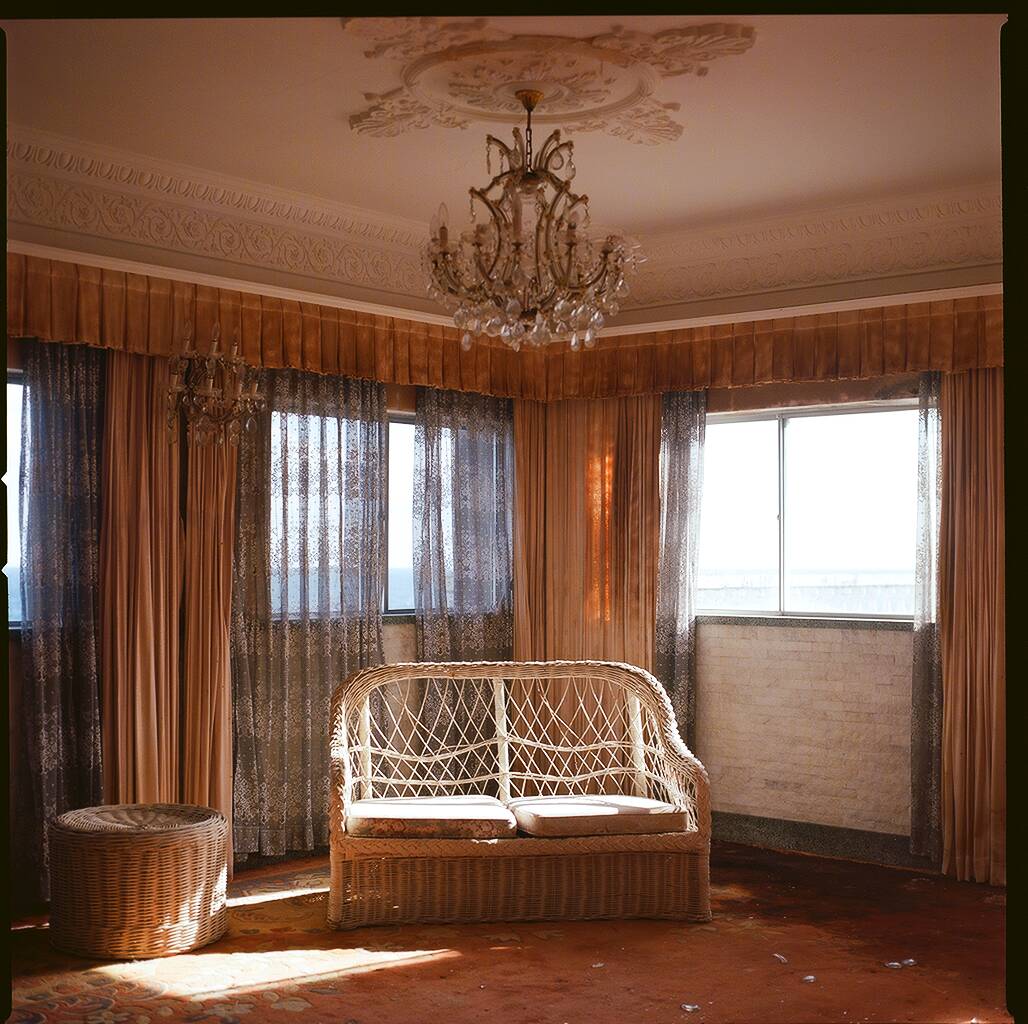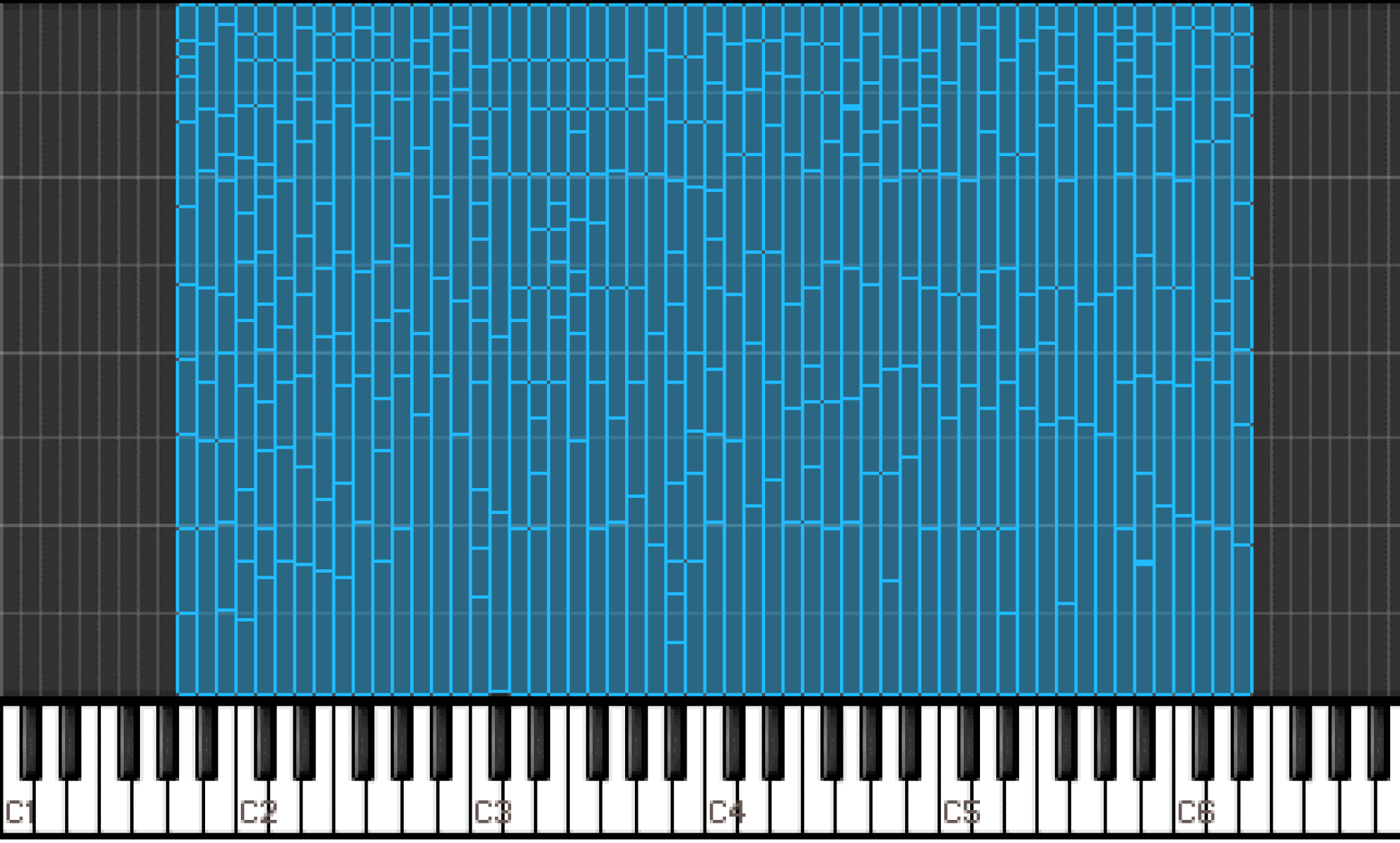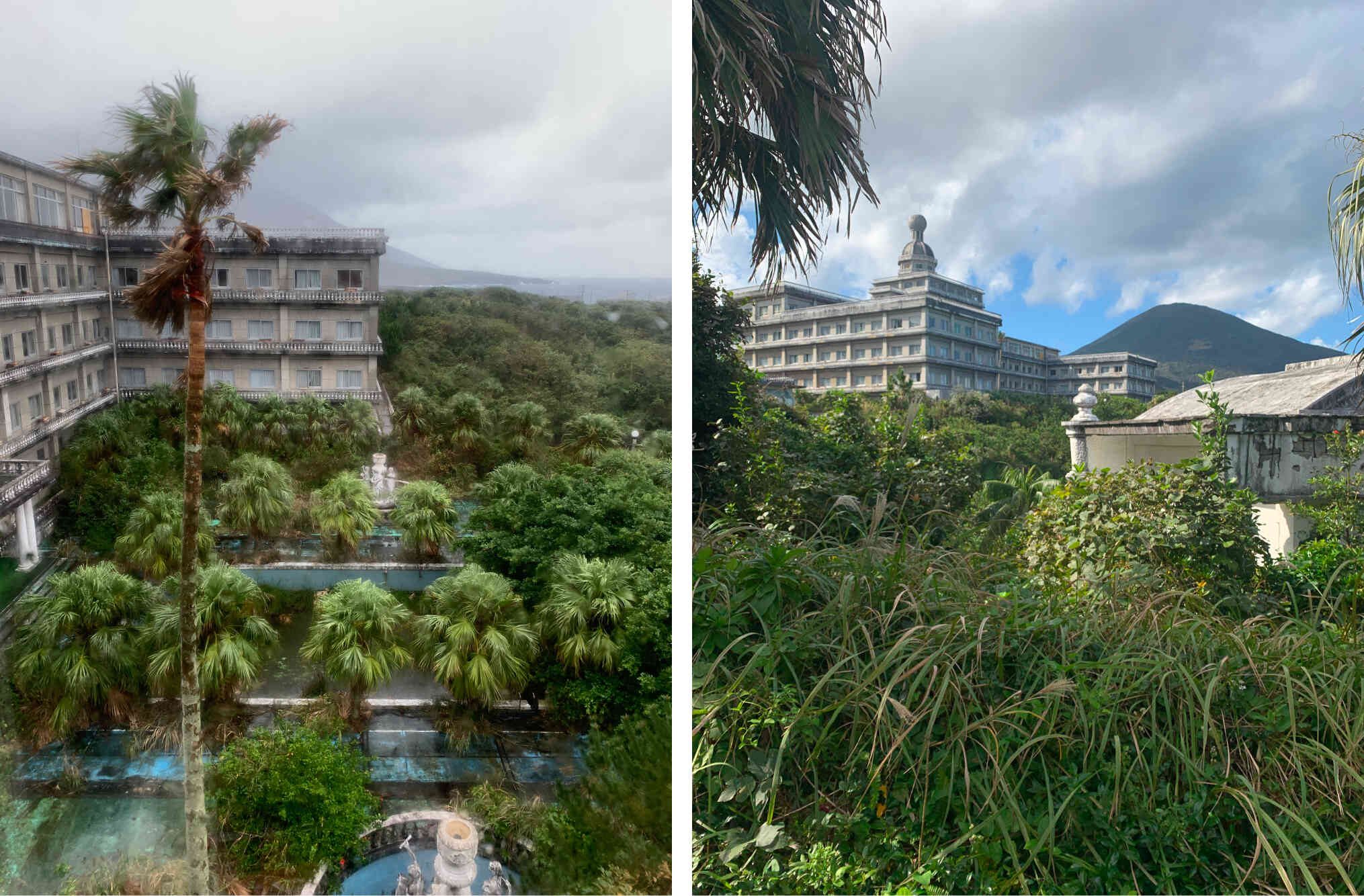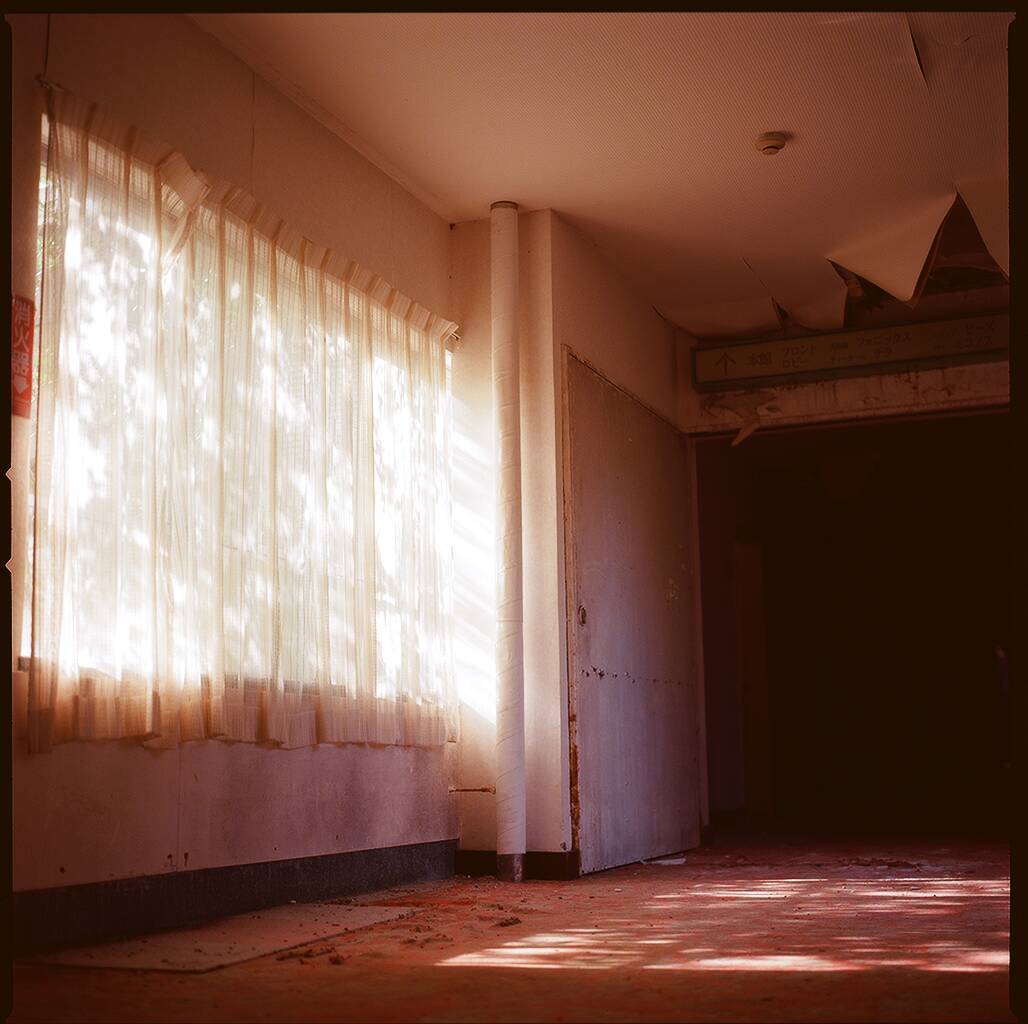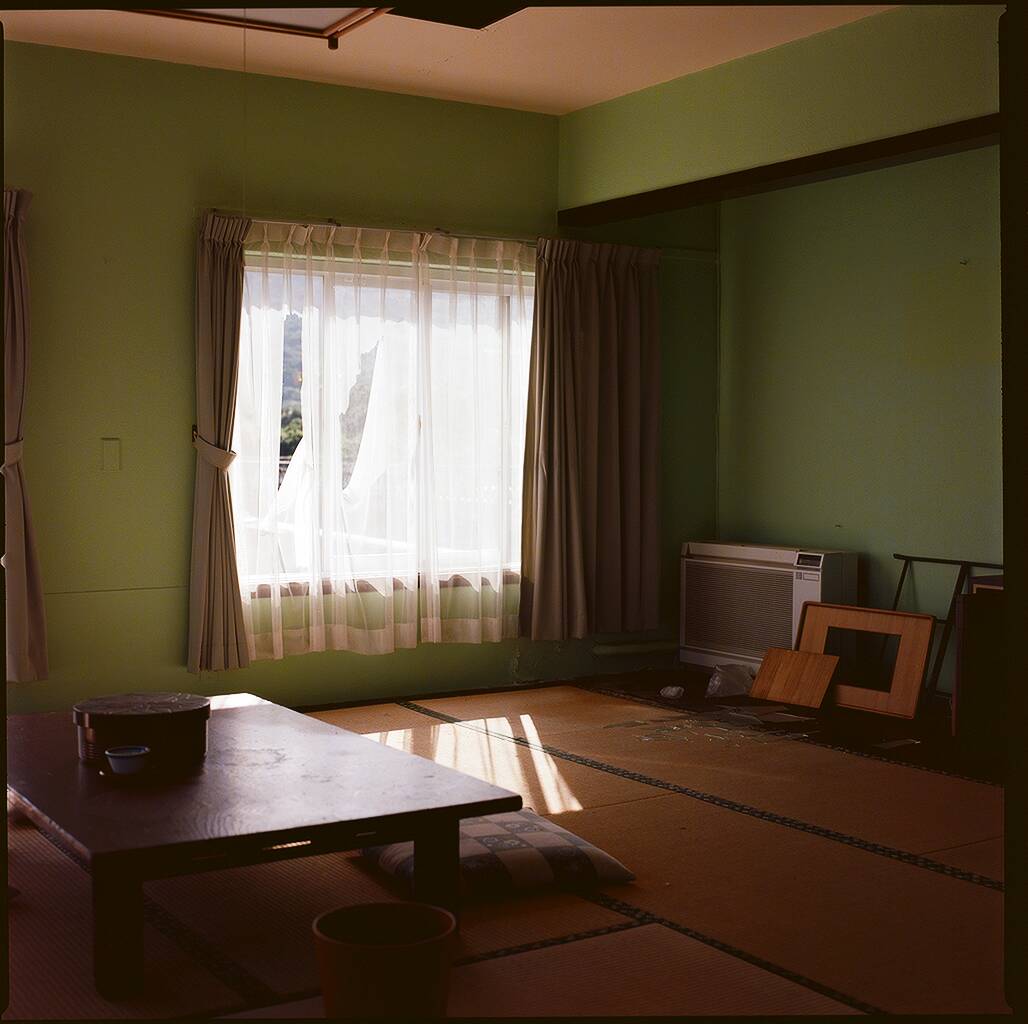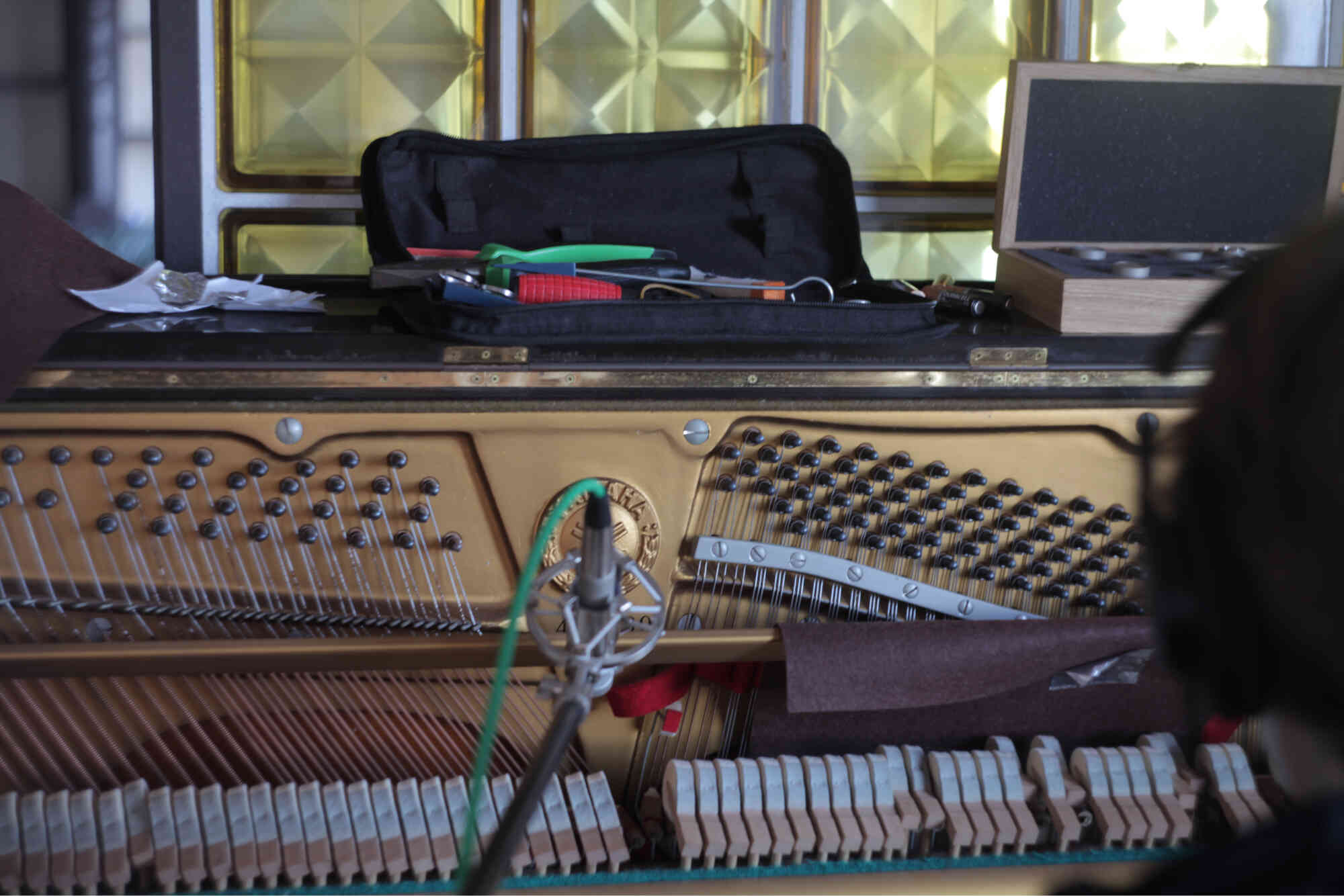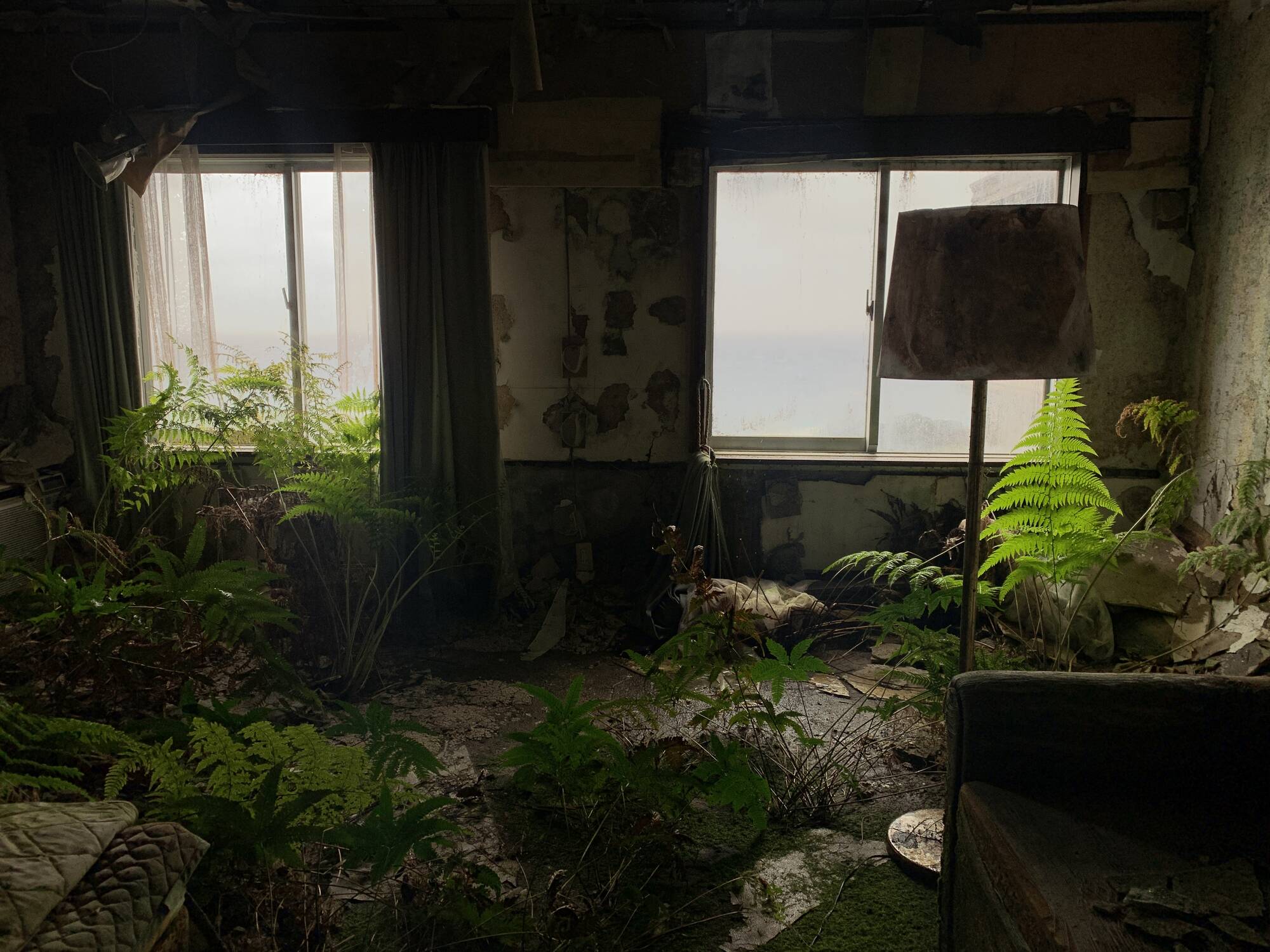Hachijo Royal Hotel
In November 2019, I embarked on a transformative journey to Hachijojima Island, a secluded gem in Japan’s Izu archipelago. My destination was the Hachijo Royal Hotel, an abandoned yet remarkably preserved structure blending Japanese minimalism and French Baroque grandeur. Over five days, I immersed myself in its hauntingly beautiful atmosphere, recording sounds from dawn until after dark. This journey marked a turning point in my creative life, opening new artistic horizons that continue to inspire my work today.
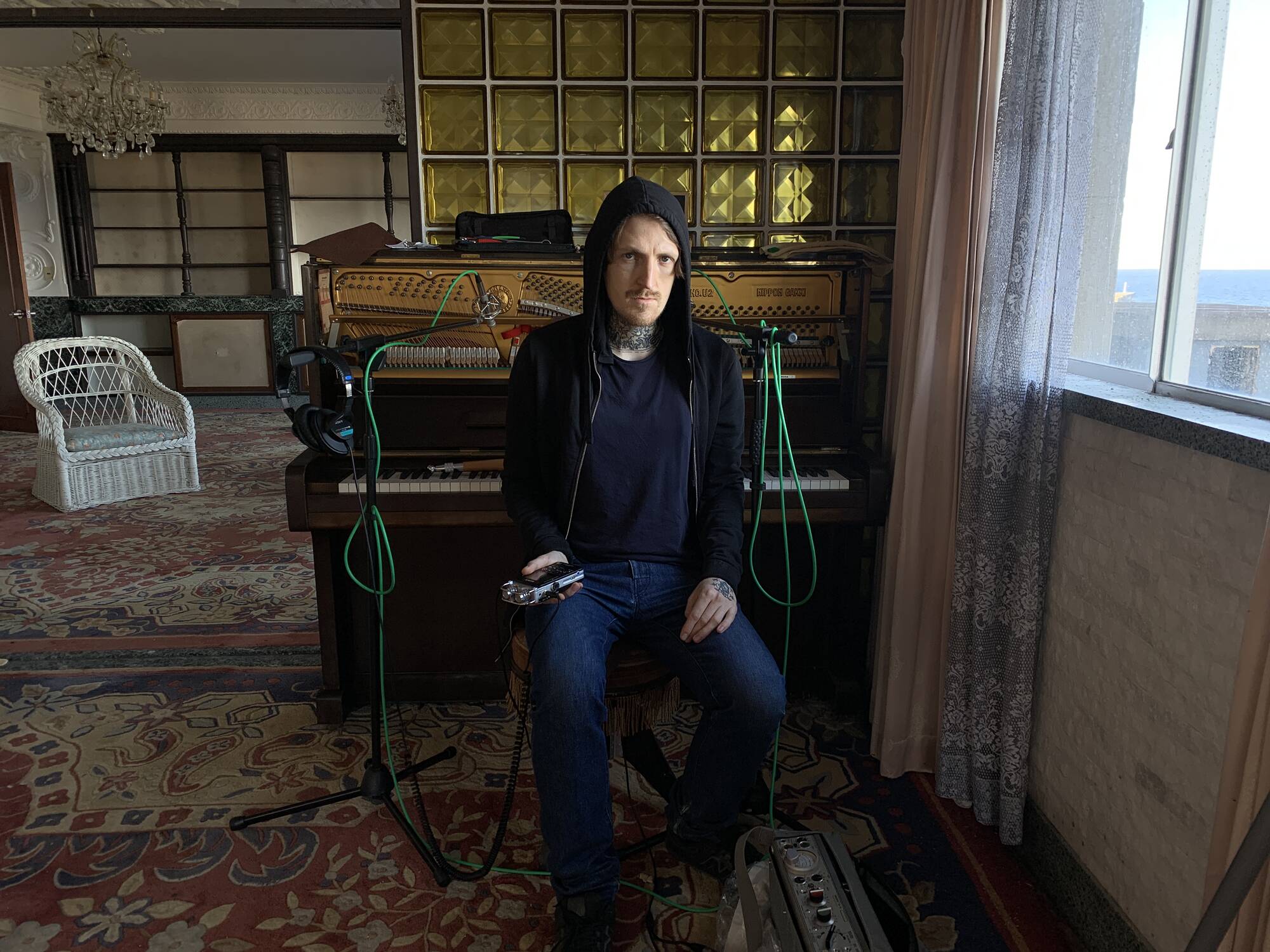
The Hachijo Royal Hotel as a Collaborator
The hotel itself became a collaborator in my creative process. Its grand halls, decaying walls, and vintage furnishings offered a palette of sonic and visual textures. My wife, Tata Vislevskaya, documented the space through her lens, creating a rich archive that allowed me to reconnect with the experience long after I left. Together, we explored the interplay between sound, space, and decay, finding inspiration in every corner of this surreal environment.
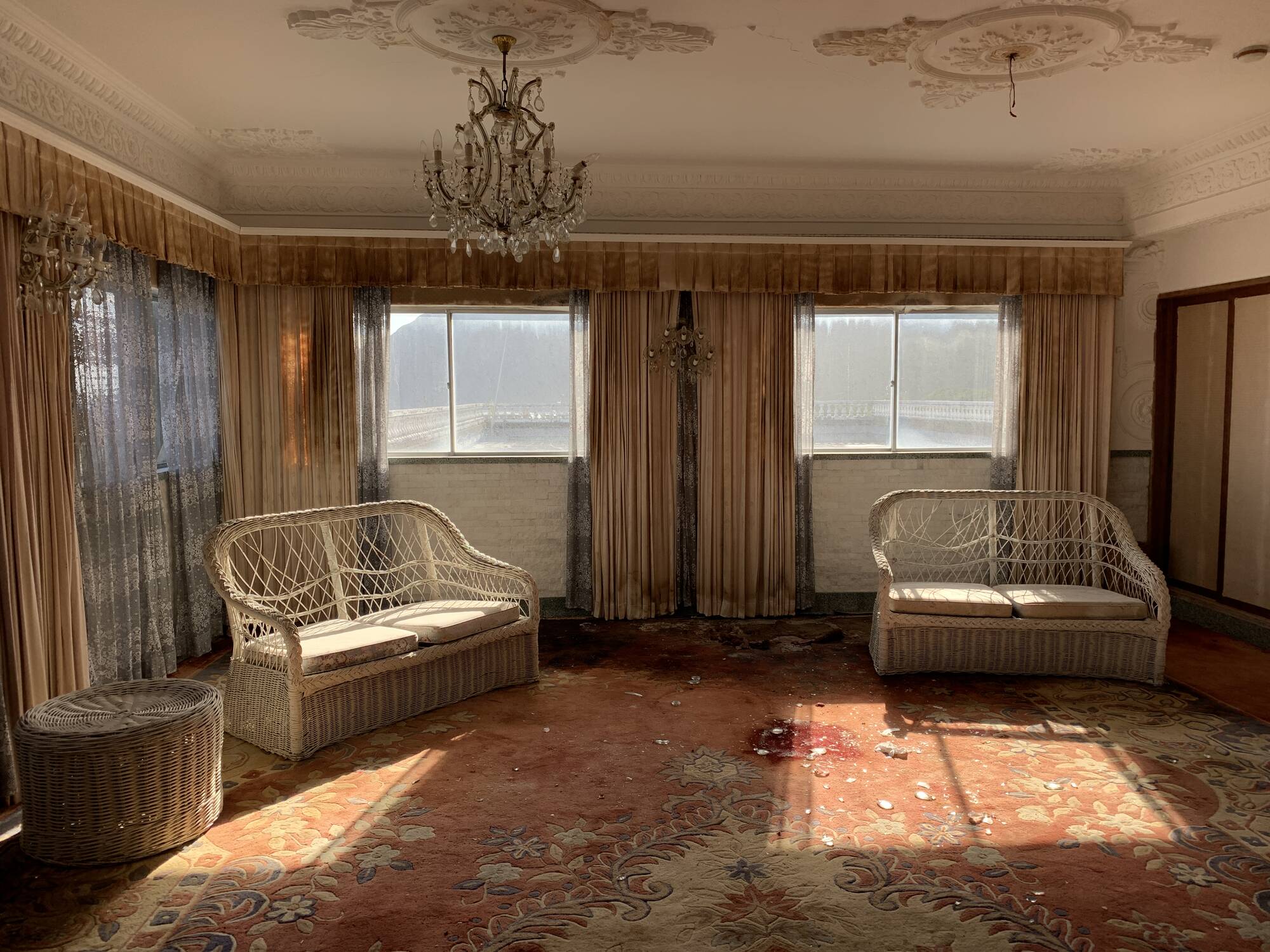
The Yamaha Upright Piano
In the VIP room, I discovered a pristine Yamaha upright piano, untouched for over a decade. Setting up a temporary studio, I tuned the piano using a custom kit, muting two strings per note to create a more delicate tone. I replaced the original felt with synthetic felt, enhancing the bass and attack while preserving the piano's natural warmth. Using Octava microphones and the preamps of a Nagra recorder, I recorded between seven and fifteen velocity layers per note, capturing an unparalleled level of detail. The lower octaves, with their extended release times, added a meditative quality to the recordings. This meticulous process resulted in a piano library that remains central to my work today.
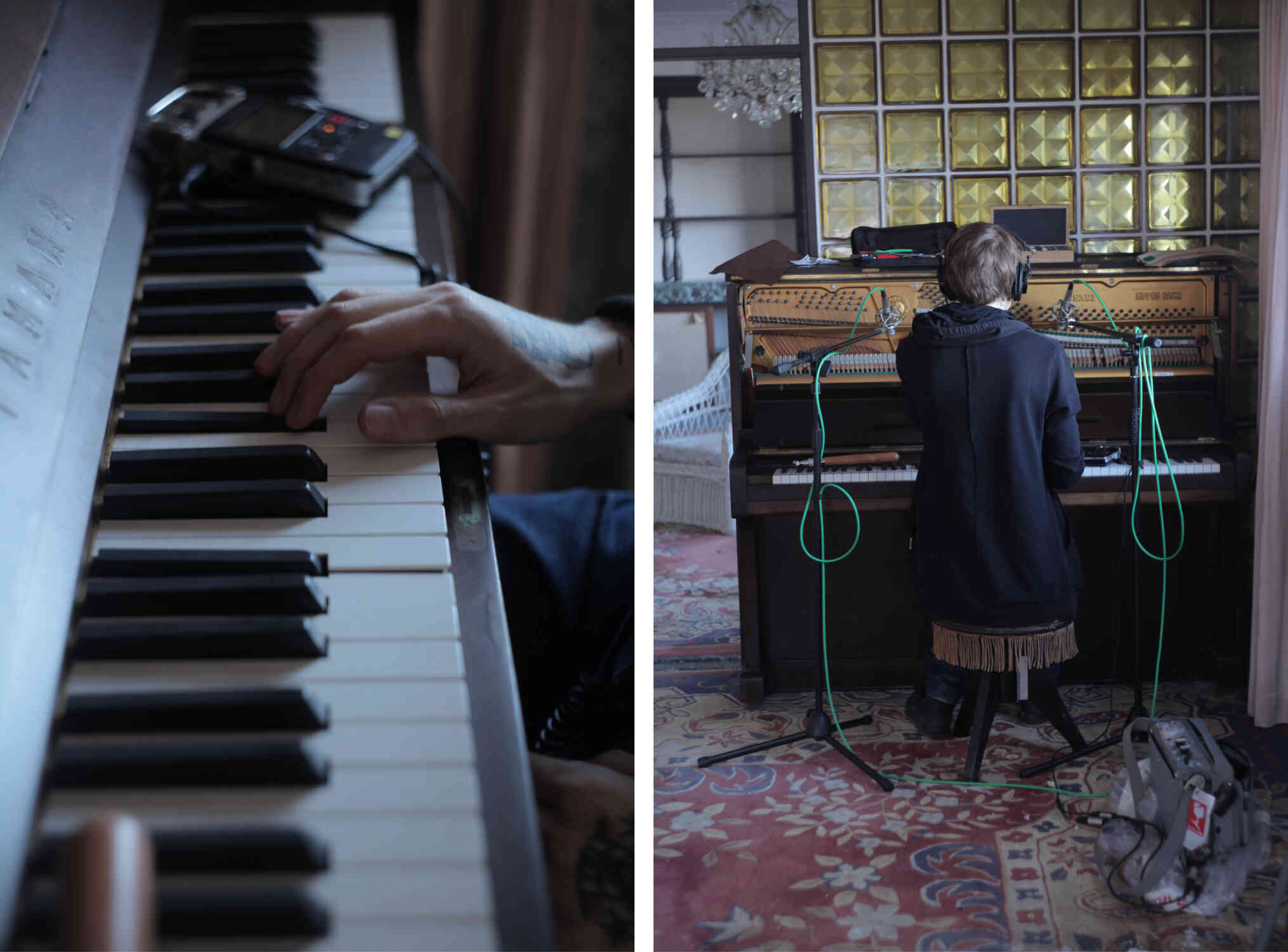
Exploring the Soundscape
Beyond the piano, I recorded a variety of sounds: the delicate resonance of French Baroque chandeliers, the whispers of wind through open windows, the echoes of footsteps in empty halls, and the distant calls of crows outside. These recordings were captured using both a Nagra stereo recorder with condenser microphones and a Sony PCM-D100 field recorder. Each sound contributed to a layered, immersive soundscape that preserved the spirit of the hotel.
Emotional and Creative Impact
The isolation and silence of the Hachijo Royal Hotel were both inspiring and unsettling. The occasional call of a crow or the distant sound of Japanese melodies from the island's loudspeakers heightened the surreal atmosphere. Working in complete darkness after sunset, guided only by a flashlight, added a layer of intensity to the experience. These moments of beauty and anxiety transformed my creative perspective, pushing me to embrace the unpredictability of the environment and trust in the artistic process.
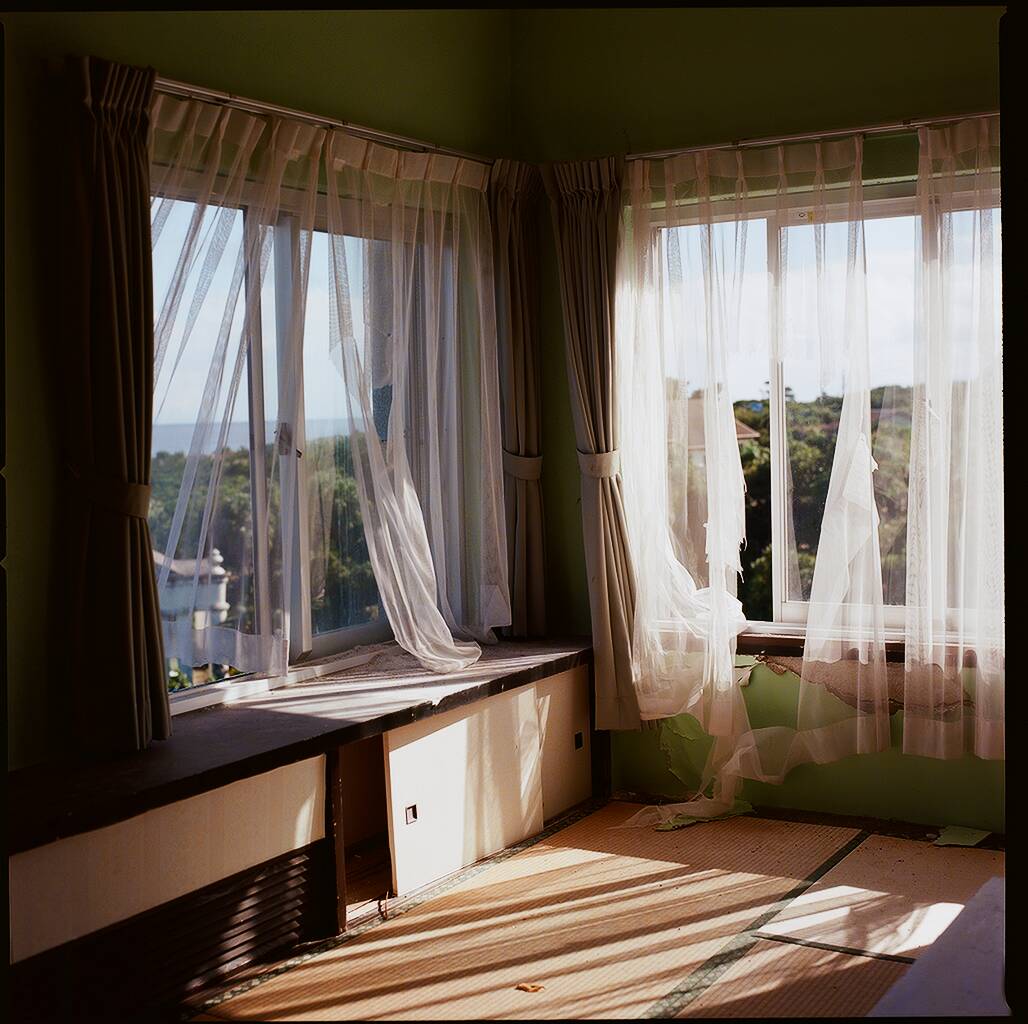
The Legacy of Hachijo
The recordings from Hachijojima have become an irreplaceable part of my artistic arsenal. The piano library, in particular, has been featured in numerous projects, from film scores and sound installations to generative soundscapes and collaborations with artists like Pete Townsend. Its authenticity and depth are unmatched, embodying the unique acoustics and emotional resonance of the space where it was created. The Hachijo experience not only expanded my technical skills but also reaffirmed my belief in the transformative power of art, even in the most unexpected places.
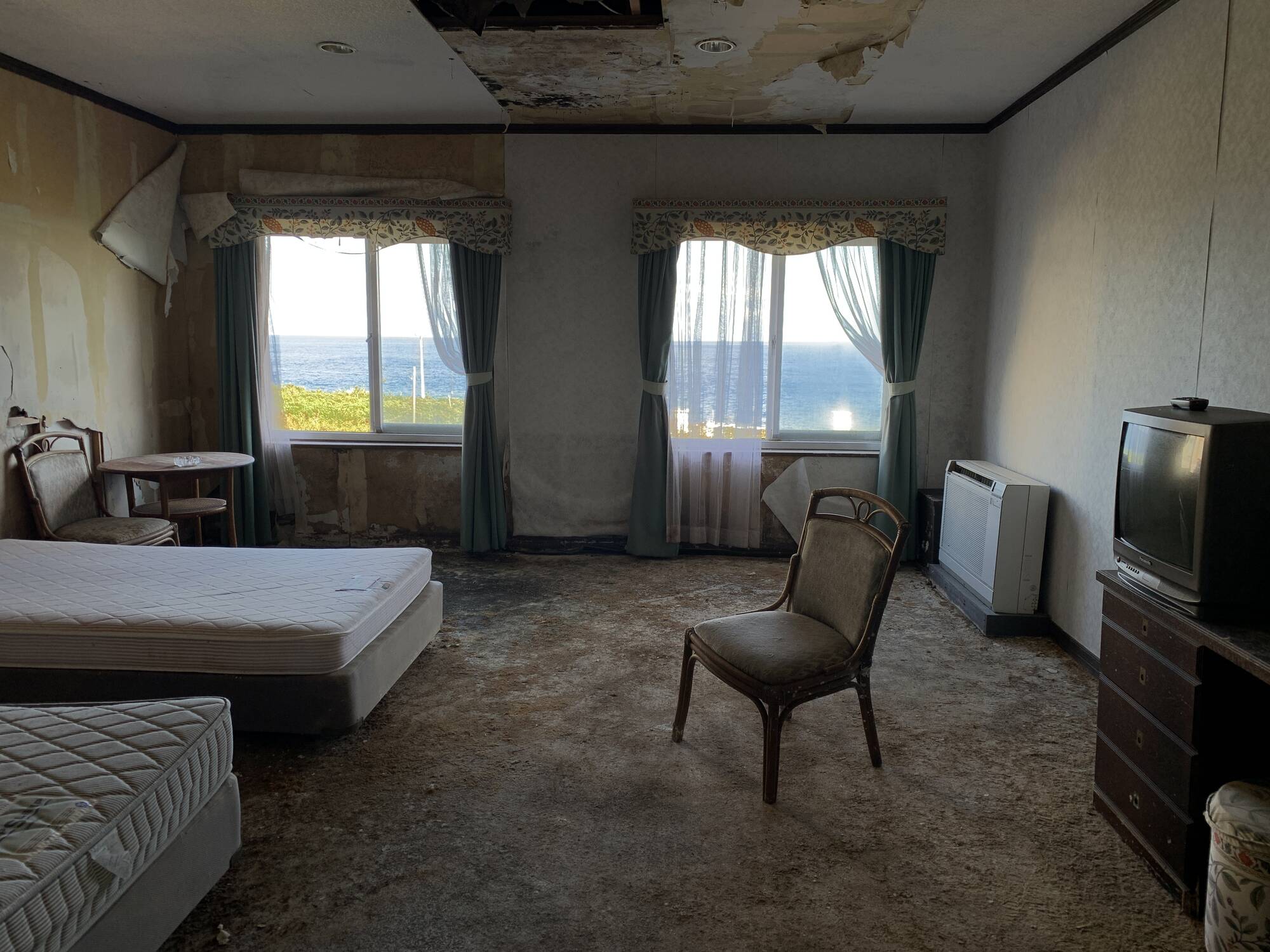
Distant Sounds
One of the most profound influences of this experience was the realization of how distant sounds can shape a soundscape. The faint melodies from the island’s loudspeakers and the subtle reverberations of the hotel reminded me of the importance of space and realism in sound design. This philosophy continues to inform my work, as I strive to create soundscapes that reflect the complexity and depth of the real world, leaving space for the imagination to wander.
The Pandemic and Its Aftermath
The pandemic interrupted my plans to return to Hachijojima in 2020, forcing me to postpone further exploration of the site. However, this unexpected pause gave me the opportunity to revisit and expand upon the recordings I had already made. During the lockdown, I began experimenting with generative bird sounds, inspired by a nightbird recording I had made in Los Angeles. These experiments evolved into a new creative direction, intertwining the influence of Hachijojima with my explorations of artificial soundscapes.
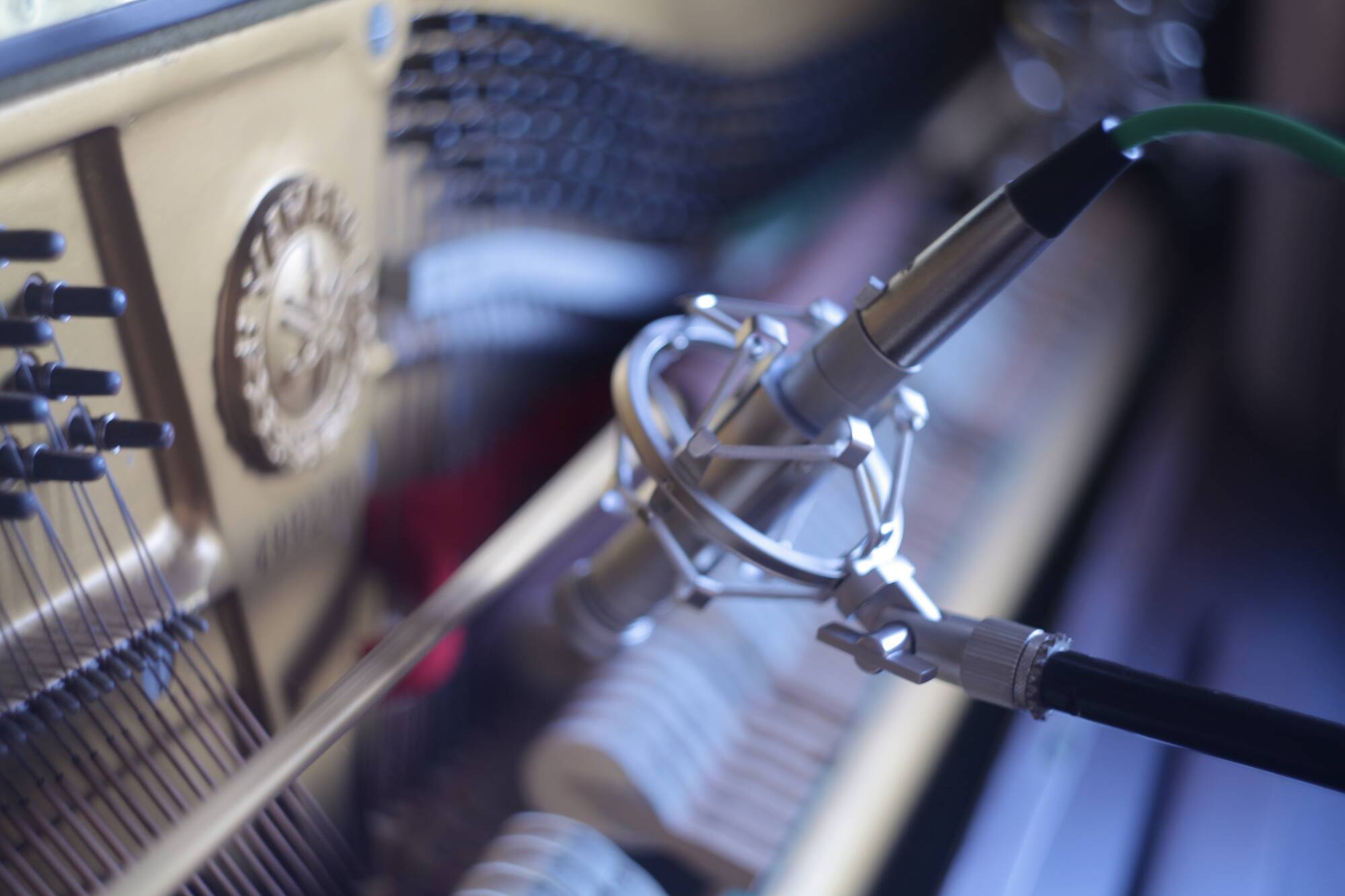
The Hachijo Royal Hotel remains a cornerstone of my artistic journey. Its unique acoustics, evocative atmosphere, and the challenges of working within its walls have left an indelible mark on my work. This experience reaffirmed my belief in the power of art to transform spaces and perceptions, turning decay and abandonment into sources of beauty and inspiration.
